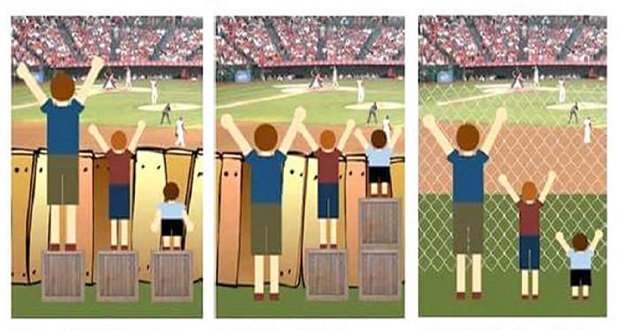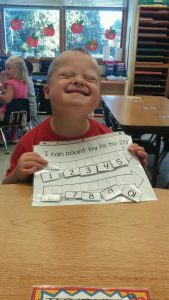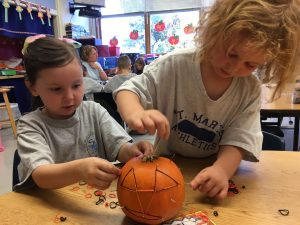The following article was contributed by Maggie Hubbard, ACES Assistant Director for Special Education, Notre Dame of Maryland University.
One-size-fits-all approach…it really only addresses the needs of one child.
As Catholic schools continue to move forward in the effort to include and educate students of all academic levels and abilities including students with learning challenges as well as those who exceed grade level expectations, the question that often comes up is, how? How do we do this? One of the primary challenges cited by Catholic schools is that they don’t always have the extra resources available. They might have a resource teacher, special educator, content specialist, or counselor on staff but that person may have other duties and therefore that person may not be available to do all of the extra instruction needed. In my experience the answer lies with the regular education teacher. More often than not, classroom teachers have all of the skills and instruction know-how necessary to meet the needs of a vast array of learners. All they need is to figure out the most effective ways to implement those strategies they probably already use. Enter what I like to refer to as the dynamic duo of curriculum accessibility — Differentiated Instruction (DI) and Universal Design for Learning (UDL). Teachers who intentionally design their classrooms with an eye to universal accessibility, and then differentiate instruction when necessary, will support the learning process of many students.
DI is not a new concept. It’s been around for quite a while. As described by Carol Ann Tomlinson, who essentially wrote the book on DI, it’s just good teaching. Both a philosophy and a way of teaching, teachers who differentiate make proactive instructional decisions in response to the identification of where students are in relationship to a learning goal. Variations can be made to what students learn (although as often as possible the “what” of learning should be as close to curriculum goals as possible), how they learn it, and/or how they demonstrate their learning. Learning activities can be varied based on student readiness, their interests, and/or their learning preferences (www.differentiationcentral.org.). UDL actually has its roots in architecture. Ramps, closed captioning, wide doors, and curb cuts are all considered to be universal design features. While they might be intended to increase accessibility for a particular population, by design they create universal accessibility. The idea is similar in education. UDL is a framework that addresses the primary barrier to success for many students…an inflexible curriculum. By identifying the barriers within the curriculum and then planning for the students in the margins on both ends of the spectrum, teachers develop instruction that is accessible to all and thereby makes learning possible for every student (www.udlcenter.org).
DI – the supports match the needs of each child so all are successful.
UDL – barriers are eliminated so that all children are successful.
Both approaches recognize and honor the fact that every learner is different making a one-size-fits-all approach to teaching unlikely to support success for all students. They both emphasize the importance of being clear about learning goals and using assessments both before and during instruction to ensure that students are actually achieving those goals. Also, both can be accomplished employing instructional strategies that teachers already use. It’s about how, when, and why those strategies are implemented that makes the difference.
So why then are DI and UDL the dynamic duo of curriculum accessibility? Well, UDL emphasizes proactive design of both the environment and the curriculum to eliminate barriers that might impede learning. DI emphasizes responding to individual student needs. Imagine the classroom where a teacher is employing both approaches, reaching as many students as possible with universal design then addressing the needs of those who still struggle through differentiation. That would be a dynamic class where ALL children can learn!



